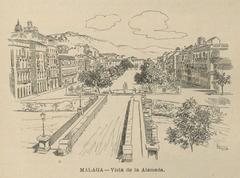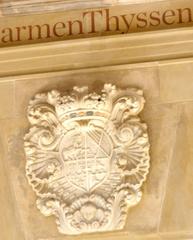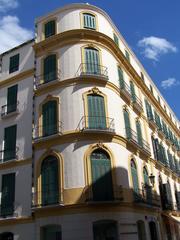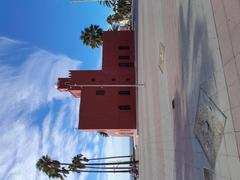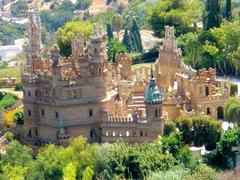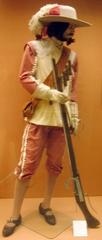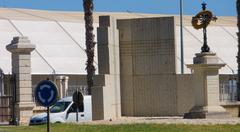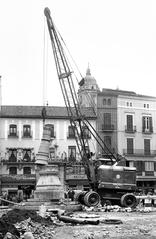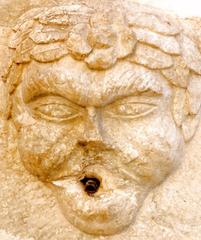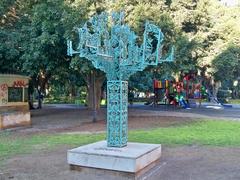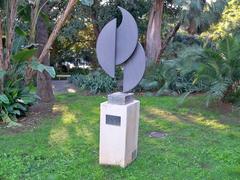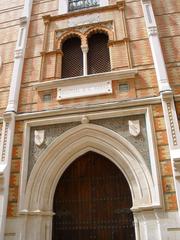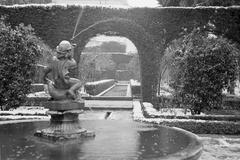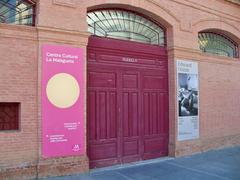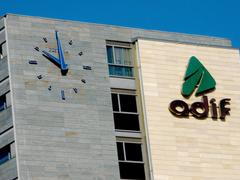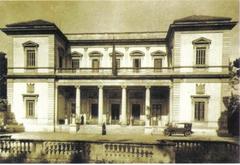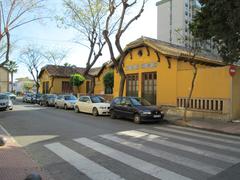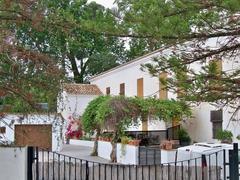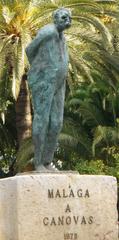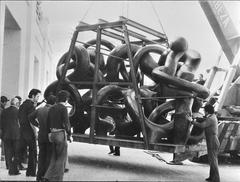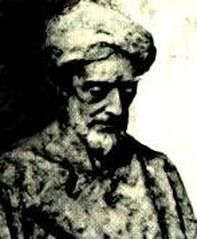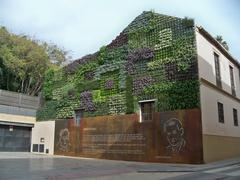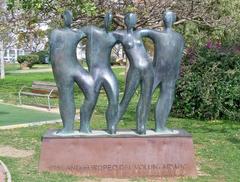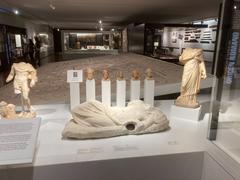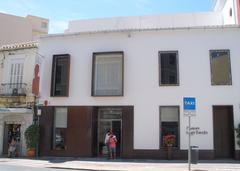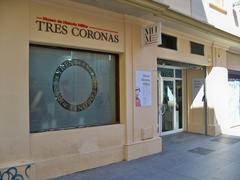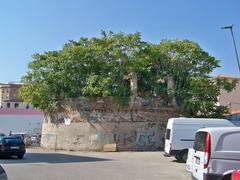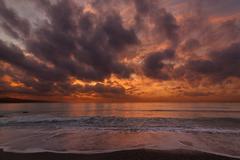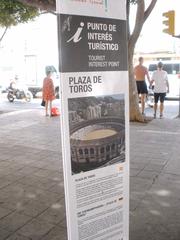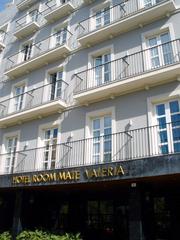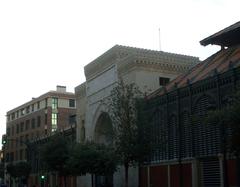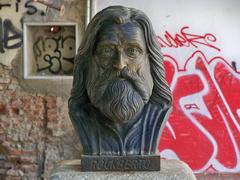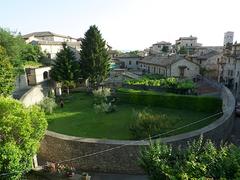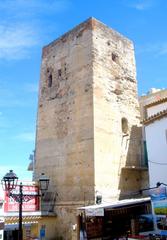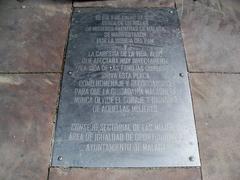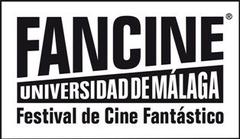
Visiting St. Stanislaus Kostka College Málaga – Guide, Tickets, Hours, and Tips
Date: 04/07/2025
Introduction: History and Significance
St. Stanislaus Kostka College (Colegio San Estanislao de Kostka), located in the lively El Palo neighborhood of Málaga, Spain, is a renowned Jesuit institution founded in 1882 by the Society of Jesus. Named after Saint Stanislaus Kostka, a 16th-century Polish Jesuit novice known for his deep faith and commitment, the college represents over a century of academic excellence, moral formation, and service to the community. As one of Málaga’s oldest educational centers, the college exemplifies the Jesuit tradition of intellectual rigor and holistic development, contributing significantly to the city’s cultural and educational landscape.
The campus blends striking late 19th-century Andalusian and neoclassical architecture with tranquil courtyards and a beautiful chapel featuring stained glass and religious art. St. Stanislaus Kostka College is not only an active school but also a vibrant cultural hub, hosting concerts, exhibitions, and community events that enrich Málaga’s cultural scene.
For visitors, understanding the college’s history, architectural highlights, visiting hours, ticketing policies, and accessibility options is key to making the most of your experience. The college’s location in El Palo, with nearby beaches and local attractions, also makes it an ideal starting point for exploring Málaga’s diverse offerings.
For updated information, always consult the official college website and resources such as the Málaga Tourism Office.
Discover the enduring legacy and dynamic community life of St. Stanislaus Kostka College, one of Málaga’s most significant educational and cultural landmarks. (source 1, source 2, source 3)
Contents
- Introduction
- Location and Access
- Historical Background
- Educational and Cultural Significance
- Architecture and Artistic Heritage
- Visiting Hours, Tickets, and Guided Tours
- Accessibility and Visitor Services
- Nearby Attractions
- Practical Tips
- Events and Community Life
- Frequently Asked Questions (FAQ)
- Conclusion
- Sources
Location and Access
Address: Avenida Juan Sebastián Elcano, 185, 29017 Málaga, Spain (Open Plaques)
Getting There:
- By Public Transport: City buses (Lines 3, 11, and 34) connect Málaga’s center with El Palo, with stops near the college. The journey typically takes 20–30 minutes.
- By Car: Access via the A-7 coastal highway. Parking is limited, especially during school hours and events.
- By Taxi or Rideshare: Taxis from the city center cost approximately €10–€15.
- From Málaga-Costa del Sol Airport: About 20 km from El Palo; taxis or rideshares are fastest. Alternatively, take a train or bus to the city center and transfer to a local bus (Visit-Andalucia).
Historical Background
Founded in 1882 by the Society of Jesus, St. Stanislaus Kostka College has been a cornerstone of education in Málaga for over 140 years. Its namesake, Saint Stanislaus Kostka, is celebrated for his youthful piety and perseverance, inspiring Jesuit educational institutions worldwide. The college’s history is intertwined with Málaga’s own evolution, transitioning from a working-class district to a vibrant cultural area. The institution has produced distinguished alumni, such as philosopher José Ortega y Gasset (Open Plaques), and continues to shape the city’s academic and cultural fabric.
Educational and Cultural Significance
St. Stanislaus Kostka College is recognized for its high academic standards, rooted in Jesuit principles of intellectual rigor, ethical leadership, and social responsibility. The curriculum spans primary, secondary, and vocational education, fostering well-rounded development in academics, languages, and values. The college’s community engagement includes service-learning programs addressing social justice, environmental sustainability, and educational equity.
Religious and ethical formation is central to college life, with regular masses, retreats, and opportunities for reflection, guided by the Jesuit ideal of cura personalis—care for the whole person. The college also supports intercultural dialogue through cultural events, exhibitions, and open lectures.
Architecture and Artistic Heritage
The main building, constructed in 1882, features:
- A neoclassical façade with arched windows and decorative stonework.
- Cloistered courtyards and tranquil gardens.
- A chapel adorned with intricate stained glass, woodwork, and religious iconography.
- Murals and sculptures that reflect Jesuit history and Catholic tradition.
A commemorative plaque honors José Ortega y Gasset, emphasizing the college’s historical and cultural significance (Open Plaques). The campus blends historic charm with modern educational facilities.
Visiting Hours, Tickets, and Guided Tours
General Access:
- Exterior: Viewable at any time from public streets.
- Interior: Access is restricted during school hours (Monday–Friday, 8:00–17:00) for safety and privacy.
- Open Days/Special Events: The college occasionally offers guided tours or open days, especially during local festivals or heritage events.
Guided Tours:
- Available by appointment, typically during school holidays or weekends.
- Tours highlight the chapel, courtyards, historic archives, and educational heritage displays.
- Contact the college administration to arrange a visit.
Tickets and Fees:
- No fee for exterior viewing.
- Guided tours or special events may require a nominal fee; advance booking is recommended.
Contact: Official Website for the latest visiting hours, ticketing, and tour arrangements.
Accessibility and Visitor Services
- Mobility: Exterior grounds are accessible, but some interior areas may be challenging due to historic design. Ramps and accessible restrooms are available in some areas—arrange accommodations in advance if needed.
- Restrooms: Available for tour groups and during special events.
- Dining: No on-site café, but numerous restaurants and chiringuitos are nearby along the beach promenade.
- Language: Spanish is the primary language, but tours in English and French can be arranged.
Nearby Attractions
- Playa de El Palo: Traditional beach with local seafood bars (Mapcarta).
- Municipal Public Library Emilio Prados: Literary hub nearby.
- Playa de Pedregalejo: Scenic beach promenade (Mapcarta).
- Villa Cristina: Historic villa in El Palo (Mapcarta).
- Málaga Old Town: Accessible by bus, featuring the Alcazaba, Málaga Cathedral, and Picasso Museum.
Practical Tips for Visitors
- Best Times: School holidays (late June–early September, Christmas, Easter) and weekends are quieter. Local festivals may offer special access.
- Etiquette: Dress modestly, especially inside the chapel. Respect the active school environment and avoid disrupting classes or events.
- Safety: El Palo is generally safe; standard urban precautions apply.
- Photography: Permitted outdoors; indoor photography requires permission. Do not photograph students or staff without consent.
- Language: Bring a translation app if you do not speak Spanish.
Events and Community Life
While public events are rare, the college participates in major Málaga festivals such as Noche en Blanco and Semana Santa, when it may host exhibitions, concerts, or religious processions. El Palo itself is lively year-round, with summer festivals and city-wide events like the Málaga Fair enhancing the visitor experience (Guide to Malaga).
Frequently Asked Questions (FAQ)
Q: What are the visiting hours?
A: The exterior is accessible any time; interior access is limited and usually requires prior arrangement for guided tours or during open days.
Q: Are tickets required?
A: No fee for exterior visits. Guided tours or events may require tickets; check with the college in advance.
Q: Is the college accessible for people with disabilities?
A: Some areas have ramps and accessible restrooms, but historic sections may be limited. Contact the college for specific needs.
Q: Can I visit during school hours?
A: Access is restricted during school hours (8:00–17:00, Monday to Friday). Tours are recommended during holidays or weekends.
Q: Are virtual tours available?
A: Not currently, but virtual resources may be added in the future. Check the official website for updates.
Conclusion
St. Stanislaus Kostka College is a remarkable destination for those interested in Málaga’s educational, religious, and architectural heritage. Its Jesuit roots, historic campus, and vibrant community life make it a must-see for visitors seeking a deeper understanding of Andalusia’s cultural fabric. Plan your visit in advance, check for special events or guided tours, and enjoy the surrounding El Palo neighborhood for a comprehensive Málaga experience.
For up-to-date information and virtual resources, consult the official college website, Málaga Tourism Office, and related travel guides.
Sources
- Málaga Tourism Office
- St. Stanislaus Kostka College Official Website
- Open Plaques: José Ortega y Gasset
- Visit-Andalucia
- Mapcarta: El Palo
- Guide to Malaga
Plan your visit today! Download the Audiala app for personalized Málaga travel guides, explore related articles, and follow us on social media for the latest updates and events.

